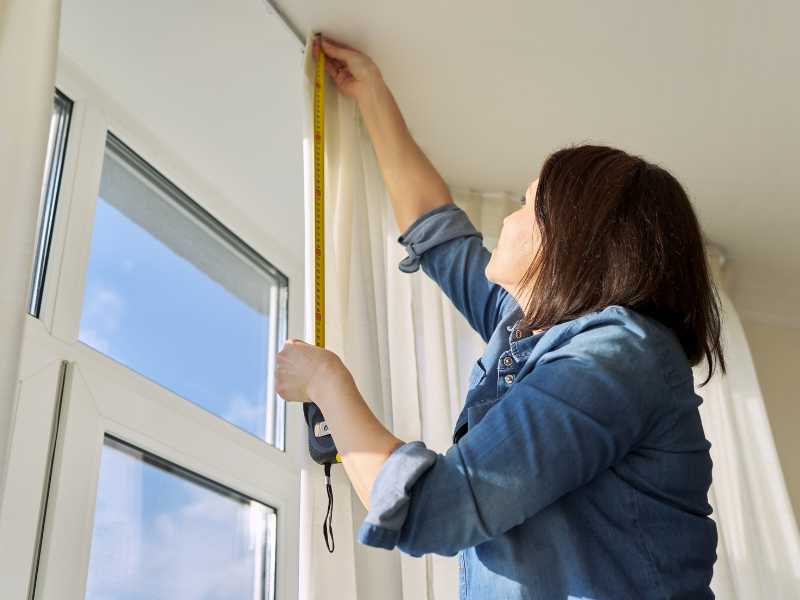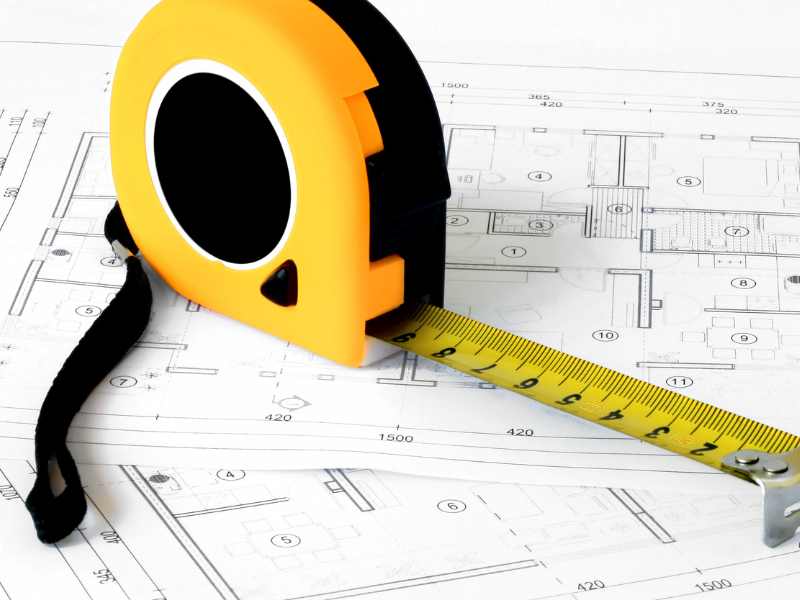Measuring for a replacement window is a crucial step that ensures a proper fit and avoids any unnecessary gaps or adjustments during installation. Accurate measurements guarantee that the new window will insulate and function as intended.
Homeowners should approach this task with care. An incorrect measurement can result in cost overruns and delays.
The process involves measuring the existing window’s dimensions, checking the squareness of the frame, and understanding which dimensions to record for ordering the replacement.

To ensure a precise fit for a new window, it’s important to not only get the width and height but also to check that the frame is square.
A window that isn’t square may need additional adjustments for a replacement window to fit properly.
Having the right tools, such as a tape measure and a level, and a clear step-by-step process can make the task straightforward.
After measurements are taken and recorded, homeowners can move forward with confidence to the finalizing and ordering stage, knowing they have the correct size for their window replacement.
Key Takeaways
- Accurate measurements are key to a well-fitting replacement window.
- Checking the frame for squareness is essential.
- The correct measurement and order details ensure a smooth replacement process.
Preparing to Measure
Proper preparation is crucial for accurate measurements. A homeowner ensures successful window replacement by obtaining the right tools and understanding the parts of a window.
Gather Necessary Tools
One will need:
- Tape measure: Essential for precise dimensions.
- Notepad and pencil: To record the measurements.
- Level: To check for even surfaces.
- Step ladder: For reaching high windows.
Understand Window Terminology
Familiarity with terms such as sash, jamb, mullion, and sill is important.
The sash is the part of the window that moves. The jamb is the side of the window frame.
A mullion refers to the structural element that divides adjacent window units. Lastly, the sill is the bottom part of the frame.
Understanding these components aids in accurate measurement taking.
Measurement Process

When measuring for a replacement window, accuracy is vital. One should carefully measure the width, height, and depth of the window opening to ensure that the new window will fit snugly and function correctly.
Measure Window Width
To measure the width of your window, one needs to take measurements at three points: the top, middle, and bottom of the window opening.
Record the smallest of these three measurements to ensure the new window will fit within the opening.
Follow the guidelines provided by Lowe’s for detailed steps.
Measure Window Height
Measuring the window height is crucial and involves measuring from the high point of the window sill to the top of the window opening.
Similar to width, one should measure the left side, the center, and the right side, using the smallest of these measurements, as advised by This Old House.
Measure Window Depth
To determine window depth, one should measure from the outermost part of the window frame to the innermost part.
This measurement is often taken at several points along the window opening to find the smallest depth, ensuring a proper fit.
More detailed guidance can be found in Bob Vila’s guide on measuring replacement windows.
Checking for Square

Before inserting a replacement window, one must confirm the window opening is square. A square window opening has all corners at a 90-degree angle, ensuring that the replacement window will fit properly.
Diagonal Measurements
To check for squareness, they should measure diagonally from each top corner to the opposite bottom corner.
The two diagonal measurements should be equal. If the measurements differ, this indicates that the opening is not perfectly square.
Use of a Level to Confirm Squareness
A level can also be employed to check squareness.
They need to place a level on the window sill and the sides of the window frame to ensure that everything is perfectly horizontal and vertical.
If the bubble is centered, it confirms the window opening is square.
Finalizing and Ordering
After carefully measuring your windows, it’s time to finalize the details and place your order for the new replacement windows.
One must ensure that the measurements are recorded accurately and seeking a professional’s consultation could save time and costly errors.
Recording Measurements
When recording measurements, it’s important to write down the smallest width and height figures obtained from the measuring process.
These recorded figures will guide the ordering process.
It’s recommended that one uses a detailed template or spreadsheet to organize these measurements, noting the location of each window for easy reference when placing the order.
For example:
| Window Location | Width (inches) | Height (inches) |
|---|---|---|
| Living Room | 35 3/8 | 47 1/4 |
| Master Bedroom | 35 1/2 | 47 3/8 |
Measurements should include a notation of any peculiarities, such as non-standard shapes or obstructions that a manufacturer should be aware of.
Consultation with a Professional
A consultation with a professional can provide valuable insights into the complexity of the project.
They can confirm measurements and offer advice on appropriate window types for the climate, house design, and personal preferences.
They might also provide tips on potential cost savings and the best manufacturers to consider.
It’s wise to reach a consensus with the professional before placing the final order to ensure all requirements are met and understood.
Frequently Asked Questions
Ensuring that one measures their windows accurately is crucial for ordering and installing replacement windows. The following are common questions that many people have during this process.
What is the correct way to measure the dimensions of old wood windows for replacement purposes?
To measure old wood windows, one should measure the width between the jambs at the top, middle, and bottom of the window opening, using the smallest of these measurements.
For height, one measures from the high point of the sill to the top of the window opening.
When measuring a window opening for a new casement window, which measurements are needed?
For a casement window, one needs to measure the width and height of the window opening.
It’s important to measure the width in three places (left, middle, right) and the height at both sides (top and bottom).
Should I record the height or the width first when noting down replacement window measurements?
When noting down measurements for replacement windows, the industry standard is to record the width first, then the height.
This helps to maintain consistency when ordering windows and avoids confusion.
For ordering the correct size replacement windows, from which part of the window should measurements be taken?
Measurements should be taken from the inside of the window frame for accuracy.
Be careful to measure from the jamb and not from the trim or other decorative elements.
Is it better to install new replacement windows from the inside of the house or the outside?
Installation can be done from either the inside or the outside, but it often depends on the type of window and the home’s construction.
The best approach should be determined by the installer based on these factors.
What tools and methods are recommended for accurately calculating window measurements for replacements?
A steel tape measure is recommended for measuring window dimensions due to its accuracy. Measure to the nearest 1/8-inch and double-check measurements for precision.






